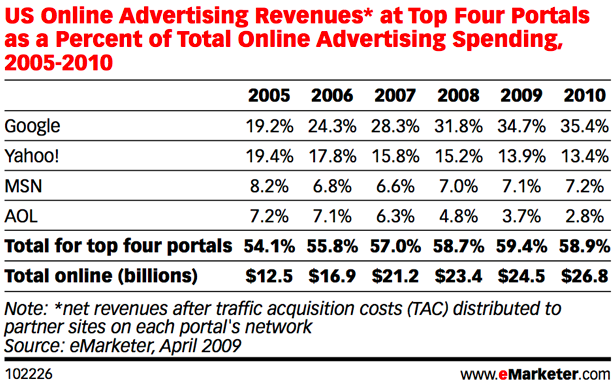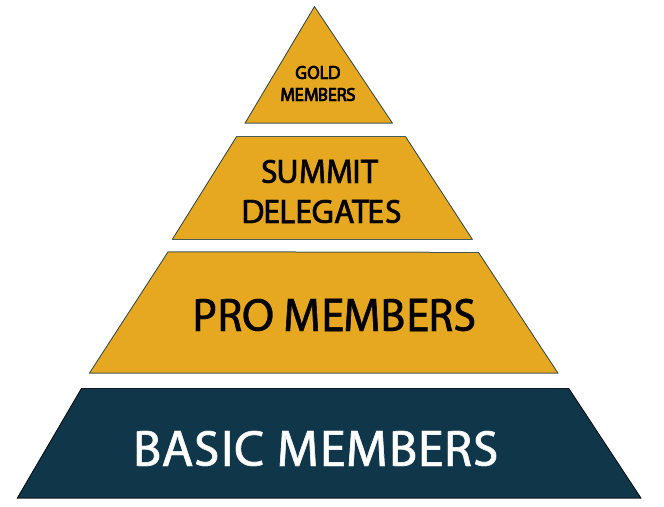Using the power of free content to build internet business models that work
The key to making money online as a publisher is giving away free content with a clear path to at least one source of revenue. In his latest book, Free: The Future of a Radical Price, Chris Anderson lists 50 free business models that work, with examples of each. Since Chris is a publishing guy, many are publishing related. Let me explain a couple…
The easiest way to use free to make money online
The simplest is the sponsored website. The publisher posts great free content, Google sends tons of free traffic, sponsors pay to be associated with the website, and the sponsor’s customers pay a few pennies more each time they buy the sponsor’s product to pay for the cost of publishing the website. In this case millions of product buyers pay for the content accessed by a far smaller group of website users. It all mixes together as the sponsor pays to build their brand by sponsoring everything from websites to Super Bowl commercials. The media mix is so complex that there is very little direct connection between the extra pennies consumers pay for the products they buy and the money an individual online publisher gets from a given sponsor to run their website. The pennies do add up as a kind of media tax.
Last year the average American consumer spent more than $1,000 for the products and services they bought to pay for all the free content marketers, producers and publishers gave them for free. So, there really is no such thing as a free lunch. In every economic system, somebody pays.
Other internet business models powered by free content
Before you get too excited, let me remind you that more than 50% of online advertising is sucked up by Google, Yahoo, AOL and MSN.

About.com, which is the 18th largest website in America, uses this sponsor-driven Internet Business Model exclusively and only generates about $150M in annual revenue. It falls off pretty quickly from there. My private equity friends are fond of saying that “The Internet excels at turning advertising dollars into advertising dimes.” The Internet is the most disruptive communication medium ever conceived because it uses bits, not atoms, to make, store and deliver information.
Hope for content marketers, producers and publishers
Now before you get too depressed, let me remind you that some publishers spend more on advertising to sell their information products, than they generate from sponsors. If fact, many special-interest publishers traditionally spend 30 to 50% of their total expense budget on advertising (often called direct marketing) and generate zero percent of their revenue budget from advertising in any form. These publishers are in a position to benefit dramatically from an economic force (the Internet) that is turning advertising dollars into advertising dimes.
[text_ad]
Harnessing the Power of Free Content:
The free to premium model
Mequoda Group is just such an organization. It is a user-driven membership organization that derives 100-percent of its revenue from end users. We spend virtually no money on advertising and instead spend about $300K a year creating and giving away free content and free software. The $300K is mostly spent on the time and labor (atoms) of the talented managers, writers, designers and developers who run the Mequoda Daily Network. Hosting and broadcasting (bits) is a small percentage of our budget and getting smaller as costs continue to drive towards zero. We make money selling premium content and services to a small percentage of the 21,000 Mequoda Basic Members who spend nothing to access our free content and software.
In 2009, less than four-percent of Basic Members upgraded to some form of premium membership and spent money with us. Over time and with the aide of our membership retention efforts, we expect the percentage to creep towards 10 percent. Other publishers report premium participation as high as 20 to 25 percent and still others do fine at less than one percent. The Free to Premium or Freemium Internet Business Model is very flexible. How publishers build their free base, and the many ways to monetize that base, are numerous and ever growing.
Integrated thinking or the power of the pyramid

We have refined our business model and pyramid over and over in the six years since Mequoda Group was founded (we celebrated our sixth birthday on January 31st, 2010). Today it looks like this from the top down:
Gold Members get one-to-one consulting, support, managed hosting and email broadcasting services and pay $1,200 to $2,700 monthly for their Gold Membership Retainer plus consumables as used. This is a continuity revenue stream for Mequoda Group.
Summit Delegates attend our live face-to-face events where they interact with Mequoda Group’s Advisory Board, Officers, Staff and fellow Members. Cost varies depending on Membership status and number of days and average $1,200 per event. This is also a continuity revenue stream for Mequoda Group as Members make the Summit part of their annual training budget.
Pro Members get access to all live webinars, encore access to all past programs, free software and email Q&A support from the Mequoda Research Team about all things Mequoda. Cost is $297 per year and is a continuity revenue stream. Individuals can also buy access to single events and programs on CD. More about Pro.
Basic Members gain full access to the website including email update options, the White Paper Library and the ability to comment on our posts. Basic Membership is free.
37 Mequoda Systems & Counting
Since 2004, we have built or helped build 37 Mequoda Systems that leverage the power of Free to make millions of dollars on the Internet. Giving away free content works well when you have a plan to make money with a media pyramid that has a clear path to the gold.


